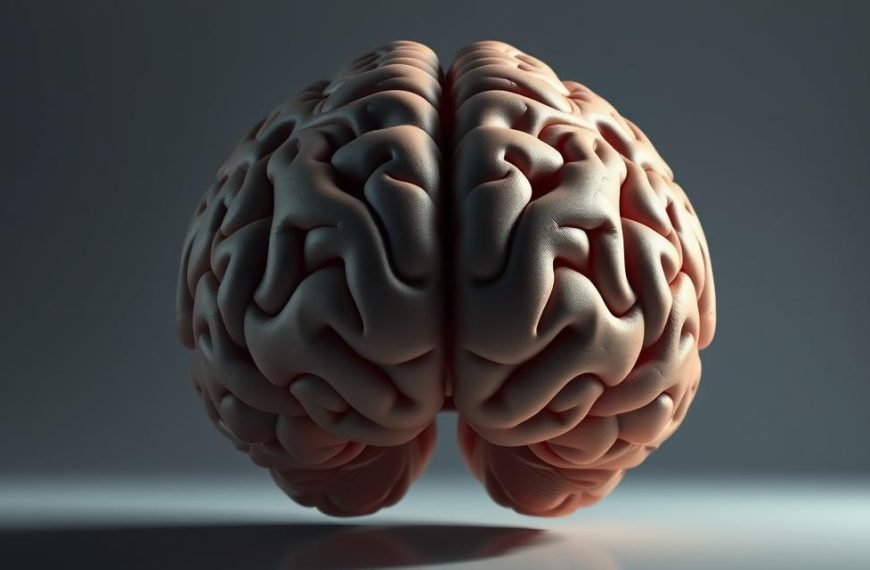This article sets out to examine how an apparatus of control turns domestic life into a realm of constant observation. It frames the enquiry for readers who want a clear view of risks to privacy and autonomy.
George Orwell imagined telescreens that broadcast propaganda and watched households. His point was not gadgetry but an omnipresent, purposive gaze that made every room a cell. That insight connects past fiction to modern concern.
The Party sustains power through fusion of propaganda, monitoring and manipulation of data. Present platforms collect behavioural signals at scale, shaping attention, choice and belief.
This piece follows a listicle structure. It moves from 1984’s architecture of control to parallels in the world we inhabit today. Readers will gain a structured view of legal, economic and civic pressures on privacy and steps toward resilience.
Setting the stage: Orwell’s 1984 and the architecture of total control
Orwell wrote amid post-war change, a moment when record systems and managerial thinking reshaped governance. This brief history places the novel inside those immediate years and shows why its warnings felt urgent.
Human “computers” then performed calculations in offices. In 1948, the word computer often meant people, not machines. That workforce model fed a vision where records and forms could steer action as surely as orders from a patrol.
Norbert Wiener’s Cybernetics argued that feedback loops turn organisms into controlled systems. Governments that adopt measurement, response, and correction can govern with less visible force.
From “computers” as people to cybernetic control
Ministries in the novel read like vast administrative computers, processing files, revising records, issuing directives. Bureaucracy becomes code: constant procedures that shape behaviour.
The shift from external coercion to internalised surveillance
Orwell described citizens acting as though always watched. That uncertainty made self-policing common, reducing reliance on frequent physical intervention. The result is a society in which language, routine and record enforce conformity.
- Context links human computation to later automation.
- Feedback-driven governance replaces episodic violence with perpetual discipline.
- This architecture frames later discussion of screens, data and nudges.
The panopticon upgraded: from prison tower to telescreen
Bentham’s panopticon placed a single, opaque tower at a cellring centre so guards could watch without being seen.
This arrangement turns sight into control. When observers stay hidden, people begin to police their own gestures and speech.
Bentham’s design and the psychology of constant visibility
Visibility here is a mechanism. The uncertainty about observation conditions behaviour more reliably than constant punishment.
Telescreens as two-way propaganda and monitoring devices
Orwell moves that tower into each home. Telescreens both broadcast and collect information, collapsing distance between state and private space.
“There was of course no way of knowing whether you were being watched at any given moment.”
Living as if always watched: the behavioural effect
The lack of a clear off-switch and the irregular schedule of observation make self-surveillance routine.
That distributed police function means fewer patrols are needed. Compliance grows from habit, not only threat.
- Telescreens unify persuasion with detection to tighten compliance loops.
- Ordinary audio and video interfaces hide extraordinary reach.
- Placement within domestic life matters more than gadget sophistication.
Newspeak and the compression of thought into code
Newspeak compresses rich human expression into a narrow, sanctioned vocabulary. This deliberate reduction removes ambiguity and trims concepts until only permitted ideas remain.
Language reduction as a control device
Newspeak works by eliminating words that name complex feelings or dissenting views. When labels vanish, people struggle to form clear thought about what they no longer can name.
Parallels to computing binaries and category design
Modern computer systems and computers demand explicit categories. Designers force social life into rigid fields and Boolean choices. That process turns nuance into data loss.
Dianne Forsythe found that many AI teams equate consistent rules with objectivity. This mistake flattens judgement and hides bias behind claims of neutrality.
- Tightly encoded information makes subtle thought statistically invisible.
- Whoever sets labels shapes which thoughts count and which fade.
- Language design itself acts as a form of technology that limits contestation.
“Reducing choice of words reduces the space for dissent.”
Rewriting the past: the Ministry of Truth’s data manipulation
Orwell wrote that records never simply record. They are revised until they support present claims.
Winston’s office made alteration routine. Articles, speeches and production figures were changed to match shifting lines. Archives became instruments of domination rather than passive stores of fact.
The regime erased a person’s name, image and mention. That erasure destroyed dissent after the fact and severed communal memory that might anchor resistance.
“Who controls the past controls the future; who controls the present controls the past.”
Winston loved the craft of falsification even as he hated its aim. His split—skilled labour without moral consent—serves as a warning to engineers and custodians who tune pipelines without asking why.
- Routine revision normalises falsification.
- Stewards who alter information hold moral risk without checks.
- Selective metrics and algorithmic curation can bury inconvenient facts.
Stakes are clear: when archives cannot be trusted, accountability dissolves and abuse persists unseen.
Emmanuel Goldstein and the digital mobilisation of hate
Screens stage anger, turning scattered grievance into disciplined unity. In 1984 Goldstein becomes a televised emblem at hate sessions, where a single video summons fear and loathing that tie many to a common ritual.
The caricature of one enemy simplifies complex unrest into a neat narrative. That manoeuvre diverts attention from systemic abuse and channels blame toward a manufactured target.
Labelled as a crime against doctrine, dissent collapses into offence. Such framing gives authorities licence to expand police reach and punish ambiguity as betrayal.
Repetition hardens reflexes: repeated scenes teach automatic reactions and mark reflective thoughts as suspect. Ritual outrage punishes nuance and narrows the space for debate.
Modern parallels are clear. Curated clips and edited fragments feed digital outrage cycles, dehumanise opponents and bind people into predictable mobs.
“Ritualised hatred crowds out pluralism and channels energy away from reform.”
- Surveillance finds triggers that reliably spark anger and amplifies them.
- Routine mobilisation erodes civic trust and weakens deliberation.
Worship of the state: replacing faith with Big Brother
Orwell staged a grim substitution: congregations and confessions give way to devotion aimed at a single, omnipresent face.
The state supplants churches and moral guides. Rituals, slogans and portraits become catechisms that promise belonging while demanding surrender of conscience and freedom.
Public rites reshape time. Calendars, marches and anniversaries fold daily life into ceremonies that mark loyalty. Missing a salute or a song is not merely rude; it reads as heresy.
That sacralisation rewrites virtue. Kindness and courage are measured by conformity and denunciation. Dissent is recast as spiritual treason, justifying harsh penalties and social exclusion.
“Obliteration of the Self” becomes doctrine: identity dissolves into mandated reverence.
- Sacred architecture mirrors the panopticon: towers that look like steeples claim omniscience.
- Control of ceremonies embeds loyalty into routine and memory.
- Pluralism withers when community hinges on ideological purity rather than humane bonds.
| Feature | Religious Tradition | State Worship Outcome |
|---|---|---|
| Allegiance | Transcendent values, conscience | Image-centred loyalty, coerced obedience |
| Rituals | Prayer, rites, festivals | Slogans, parades, calendared loyalty exercises |
| Social measure | Compassion, moral debate | Conformity, denunciation as virtue |
“Two plus two equals five”: forced consensus over facts
When rulers demand that two plus two equals five, they aim to remake certainty itself.
The doctrine acts as a test of total obedience. Facts become subordinate to decree and any dissent is framed as illness.
Legal frameworks hollow out when laws serve proclamation rather than justice. Enforcement detaches from shared standards and becomes performance.
The goal reaches beyond silence. Authorities seek to reshape the capacity for reason, insisting that citizens accept contradiction as truth.
The psychological toll is severe. People forced to recite known falsehoods lose self-trust. Mutual trust across the wider world corrodes.
Contemporary parallels appear when social pressure demands endorsement of claims at odds with evidence today. Habituation to untruth makes verification suspect.
“Compelled agreement turns debate into ritual; verification becomes optional.”
Definitional authority granted to a single face—big brother—makes discussion performative. Reversing epistemic decay is difficult once forced assent becomes routine.
- Safeguarding reason needs independent institutions and public courage.
- Defence of shared measures keeps accountability meaningful.
Children as informants: the family turned into a surveillance node
Young people become conduits for information, carrying private remarks into public files. The regime rewards those who report deviation, framing such acts as patriotic achievement.
That incentive fractures trust. A casual repetition of a name or a joking remark can trigger official interest. Parents then weigh conversation against the risk of police attention.
Care reshapes into constant vigilance. Parenting becomes a navigation of ideological landmines aimed at protecting loved lives. Play and learning spaces change too; games and lessons produce data that extend indoctrination beyond formal sessions.
- Child heroes normalise betrayal, teaching that private loyalty should yield to public creed.
- Emotional development suffers when intimacy is scarce and speech is policed.
- Over time, identity forms around caution, not choice, leaving communities atomised.
“When home no longer holds safety, resilience shrinks with each silenced conversation.”
Preserving private spheres matters. Intact family trust resists engineered conformity and helps people reclaim common life.
How is technology used by Big Brother and the Party
Omnipresent screens, microphones and informant networks form a single, layered system. Ubiquitous displays broadcast doctrine while listening devices record ambient speech. Human networks then verify signals and fill gaps left by machines.
Surveillance tools combine to make spaces reflexively public. Two-way screens both instruct and harvest reactions. Hidden mics capture tone and context that raw logs miss.
Propaganda loops that shape, predict and punish thought
Messages are tuned from collected data. Reaction metrics guide wording, which then nudges habits and emotions. Deviations spark investigation, turning small slips into formal incidents.
Predictive monitoring learns routines and flags likely nonconformity before acts occur. Central orders propagate instantly across devices and networks, producing synchronised responses among people without visible mobilisation.
| Component | Function | Effect on society |
|---|---|---|
| Ubiquitous screens | Broadcast and listen | Constant reminders of authority; reduced private speech |
| Hidden microphones | Capture ambient conversation | Evidence for interrogation; chills candid talk |
| Informant networks | Corroborate signals | Social pressure to conform; rewards for denunciation |
| Data analytics | Predict routines | Pre-emptive suppression; streamlined enforcement |
“Big Brother is watching you” summarises the deterrent effect: uncertainty of detection breeds self-censorship.
Redundancy matters: multiple channels leave no safe harbour. The apparatus trains subjects to police speech and gesture, reducing overt force while keeping compliance high.
From dystopia to data: the rise of the surveillance economy
A commercial appetite for behavioural signals turned check‑ins and photos into raw material for prediction.
Surveillance economy names a market where behavioural data is the commodity. Apps, retailers and devices harvest traces — purchases, location pings, streaming choices — then fuse them into persistent profiles.
Big Data and behavioural nudging across platforms
Early services such as Foursquare and Instagram normalised location sharing and public tagging. What felt voluntary often hid broader capture: platforms logged timestamps, friend graphs and metadata that outlived any post.
Human review has featured in optimisation too. Reports that contractors sampled Skype, Siri and other assistant audio show intimate snippets entering corporate workflows for voice refinement.
Convenience as the trade for privacy and autonomy
Companies sell convenience: personalised feeds, one‑click purchases, tailored suggestions. In return, people surrender continuous telemetry and reduced privacy.
Nudging techniques exploit cognitive bias. Timing, framing and emotional cues tilt attention and spending. What begins as helpful recommendation can become persistent persuasion.
“Opacity about data flows undermines informed consent; inferences often exceed what users think they shared.”
| Element | Source | Impact |
|---|---|---|
| Location pings | Apps, devices | Movement profiles; predictive targeting |
| Purchase records | Retailers, banks | Behavioural scoring; tailored offers |
| Voice snippets | Assistants, contractors | Human access to intimate data; training models |
| Health and app data | Social platforms | Sensitive inferences; profiling beyond consent |
Risk: commercial systems can be repurposed or accessed by state actors. The gap between private optimisation and public control narrows when infrastructure centralises vast, cross‑referenced data.
Location data, smart devices, and the United States today
Every app ping, check‑in and beacon creates a stitched record of presence and habit. These fragments of movement, held in commercial feeds, map homes, workplaces and sensitive visits across the united states.
Geolocation trails and warrant workarounds
Carpenter v. United States recognised a privacy interest in cell‑site location records and required warrants for carrier logs. That ruling raised a constitutional bar for state requests.
Yet agencies found a workaround. The Department of Homeland Security and others have purchased commercially available movement datasets from brokers to sidestep warrants.
Risk: commercially sold location data lacks the procedural safeguards of judicial process and can be queried without probable cause.
Virtual assistants, always‑on microphones, and domestic spaces
Voice assistants operate on a continuous listening model. Occasional activations produce logs; some incidents prompt subpoenas—an Arkansas prosecutor sought Alexa audio and transcripts in a murder inquiry.
Beyond automatic capture, firms have used human reviewers to transcribe or validate clips. Microsoft confirmed contractors in China reviewed Skype audio for recognition work. Such review extends acoustic surveillance into private rooms.
“When separate traces—location, voice, app events and video—are merged, re‑identification and sensitive inference become trivial.”
- Commercial repurposing: advertising datasets can be mined for investigations without warrant protections.
- Sensitive flows: new york research found massive transfers of health‑app events to social platforms, revealing intimate behaviours at scale.
- Combined risk: fused records enable precise profiling of associations and visits to clinics, houses of worship or other private sites.
Strong remedies include transparency about purchases, strict purpose limitation and procurement controls to stop end‑runs around constitutional protections. Without them, privacy and public trust will erode as more lives are rendered traceable.
Eyes in the sky: aerial surveillance and cross-referencing tools
High-altitude imaging can turn whole cities into continuous movement maps.
Wide-area aerial surveillance captures daytime movement across urban grids. Planes over Baltimore covered over 90% of the city and tracked more than 500,000 residents in ordinary hours.
The pilot claimed face‑blurring would protect privacy. Courts found otherwise. The Fourth Circuit held that persistent tracking without judicial review amounted to an unreasonable search.
Why: dots from aerial frames can be cross-referenced with street cameras, licence‑plate readers and recognition software to map identity despite low resolution.
Vendors still market similar programmes. Local procurement and shifting legal tests mean exposure varies across jurisdictions.
- Governance gaps: oversight, retention limits and sharing protocols shape risk.
- Enforcement reach: police can reconstruct presence at protests or clinics.
- Civic effect: anticipation of retrospective analysis chills assembly and speech.
| Feature | Benefit claimed | Practical risk |
|---|---|---|
| Persistent aerial imaging | Citywide awareness | Mass tracking; archival trails |
| Cross-referencing feeds | Faster identification | Re-identification despite pixelation |
| Vendor deployments | Rapid roll‑out | Patchwork legality; limited remedies |
“Unchecked aerial capture risks normalising comprehensive monitoring of civic life.”
Artificial intelligence and facial recognition as modern Thought Police
Face maps and numeric fingerprints let machines turn presence into accusation. Systems promise quick answers, yet process and judgement remain human choices wrapped in code.
How recognition software classifies and identifies
Recognition software first spots a face in an image, then converts that patch into a vector of numbers. Those embeddings travel to a database where matching yields a score.
In practice a simple pipeline appears: detection, feature extraction, comparison. Each step depends on labelled examples and on thresholds set by engineers.
From “objective” claims to encoded bias and manipulation
Models trained on skewed samples inherit social bias. Anthropological critique warns that developers often substitute complex judgement with blunt rules.
Cities now deploy artificial intelligence to speed investigations. Benefits for casework exist, but errors lead to wrongful stops and unequal scrutiny.
- Opacity: black‑box outputs lack clear rationales, limiting redress.
- Feedback loops: focus on certain areas yields more matches there, reinforcing targeting.
- Risk: misidentification can devastate lives and trust.
“When systems join wider surveillance, they move from assistance toward enforcement.”
Governance matters: independent audits, demographic accuracy thresholds, human‑in‑the‑loop review and a right to contest matches can reduce harm. Absent safeguards, these tools approximate a modern form of thought policing.
Law, rights, and regulation: privacy under pressure
Lawmakers, courts and markets now contest whether personal traces should count as protected space.
Informational privacy versus legal gaps
The Privacy Act of 1974 once declared privacy fundamental, yet the Supreme Court has not recognised a general constitutional right to informational privacy. Carpenter offered limited protection for CSLI, while other rulings restrict agency reach when statutory mandates lack clarity.
Agencies and government sometimes purchase commercial feeds to access movement logs without warrants. That practice exposes a procedural gap: judicial safeguards exist in theory, but procurement routes can bypass them.
Behavioural advertising, data-opolies and antitrust momentum
Behavioural advertising fuels mass collection and profiling inside the surveillance economy. Firms gather vast records to personalise feeds, shaping choices and amplifying harms revealed in the Facebook Files. New York audits showed sensitive health app flows into platform ad systems.
Antitrust proposals seek to curb data-opolies and self-preferencing by big tech. Bipartisan bills have traction, yet political inertia has stalled decisive votes.
| Issue | U.S. position | European contrast |
|---|---|---|
| Constitutional protection | Fragmented, sectoral laws | Charter: recognised right to privacy |
| Agency power | Constrained without clear mandate | Stronger administrative tools for data protection |
| Market checks | Antitrust bills pending | Stricter enforcement of data processing rules |
“Purpose limits, minimisation, meaningful consent and enforcement must anchor reform.”
Reform should combine statutory clarity, robust enforcement teeth, and limits on collection. For a legal primer on institutional duties and remedies, see a detailed statutory review.
Conclusion
Orwell’s warning asks us to watch purpose as closely as tools. Over time, even simple devices can steer behaviour, prune language and erase memory when aimed at control. That shift matters more than novelty.
The same systems that save people time and offer comfort can, in wrong hands, expose citizens to cumulative harm across years. Data and information flows blur lines between safety and domination worldwide.
Defence needs rights-based law, proper enforcement and institutional reform. Society must insist on purpose, proportionality and respect for dignity when systems are design and put to use.
Resisting normalisation of big brother watching takes cultural work as well as legal change. Others will inherit these systems; we owe them a lot more than efficiency — we owe accountable institutions.




















